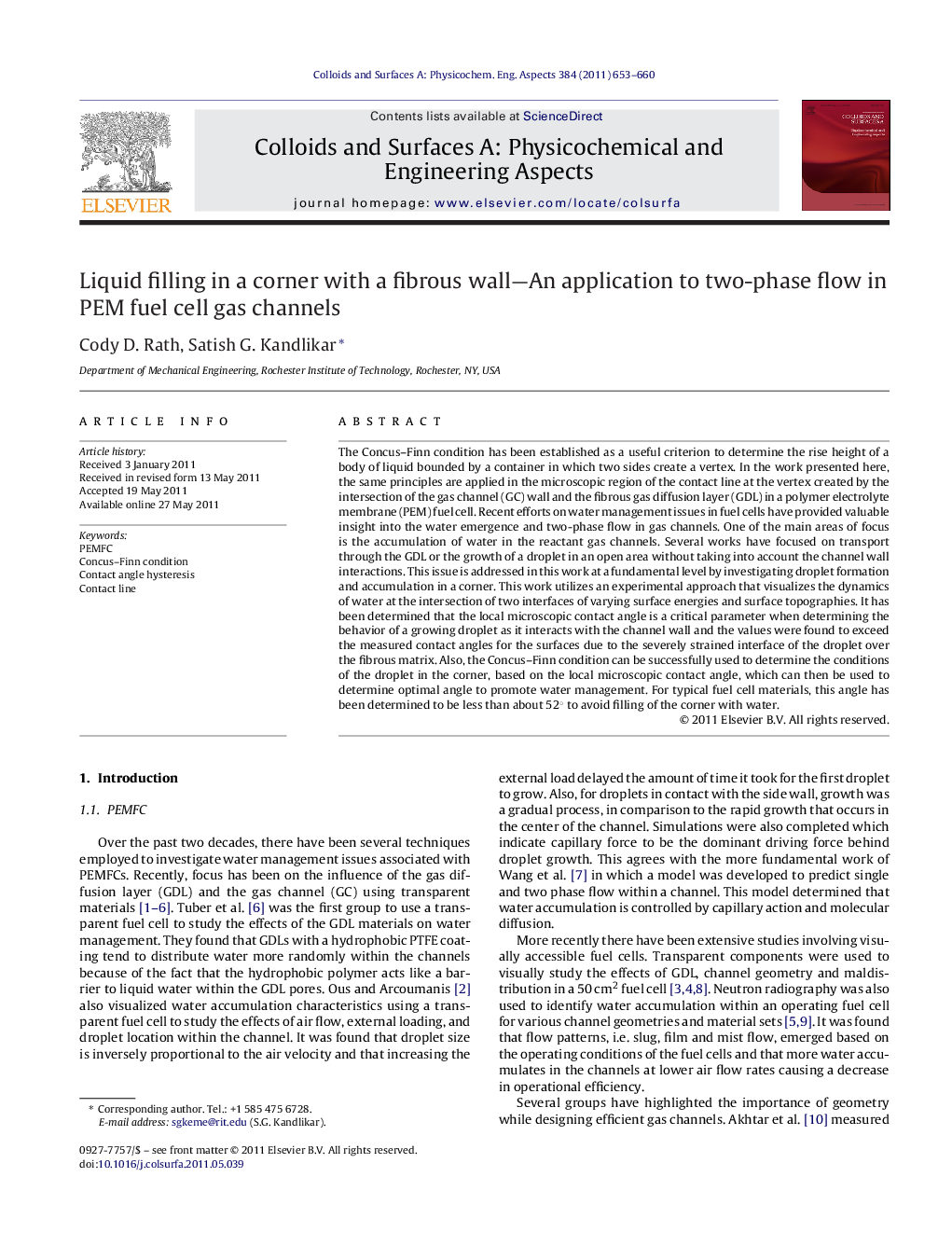| Article ID | Journal | Published Year | Pages | File Type |
|---|---|---|---|---|
| 594708 | Colloids and Surfaces A: Physicochemical and Engineering Aspects | 2011 | 8 Pages |
The Concus–Finn condition has been established as a useful criterion to determine the rise height of a body of liquid bounded by a container in which two sides create a vertex. In the work presented here, the same principles are applied in the microscopic region of the contact line at the vertex created by the intersection of the gas channel (GC) wall and the fibrous gas diffusion layer (GDL) in a polymer electrolyte membrane (PEM) fuel cell. Recent efforts on water management issues in fuel cells have provided valuable insight into the water emergence and two-phase flow in gas channels. One of the main areas of focus is the accumulation of water in the reactant gas channels. Several works have focused on transport through the GDL or the growth of a droplet in an open area without taking into account the channel wall interactions. This issue is addressed in this work at a fundamental level by investigating droplet formation and accumulation in a corner. This work utilizes an experimental approach that visualizes the dynamics of water at the intersection of two interfaces of varying surface energies and surface topographies. It has been determined that the local microscopic contact angle is a critical parameter when determining the behavior of a growing droplet as it interacts with the channel wall and the values were found to exceed the measured contact angles for the surfaces due to the severely strained interface of the droplet over the fibrous matrix. Also, the Concus–Finn condition can be successfully used to determine the conditions of the droplet in the corner, based on the local microscopic contact angle, which can then be used to determine optimal angle to promote water management. For typical fuel cell materials, this angle has been determined to be less than about 52° to avoid filling of the corner with water.
Graphical abstractFigure optionsDownload full-size imageDownload as PowerPoint slideHighlights► Concus–Finn condition is used to predict the behavior of a droplet in a corner. ► Instantaneous microscopic contact angle measured during droplet–wall interactions. ► Limit exists determining if the droplet will get drawn into the corner or pinned. ► Local contact angle is an important parameter for droplet behavior in a corner.
